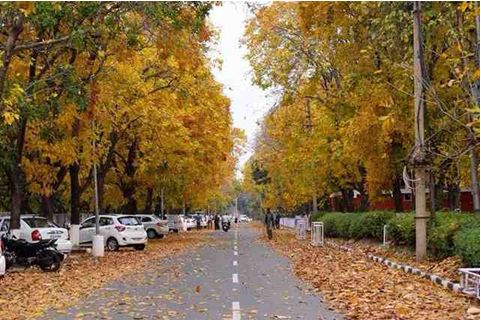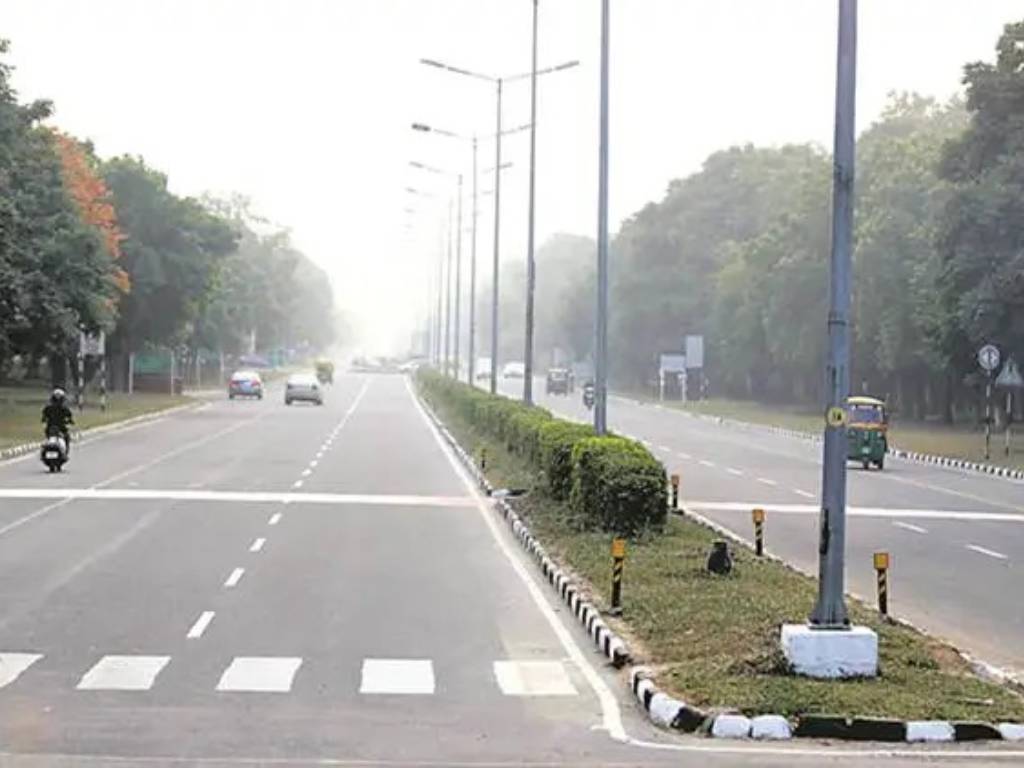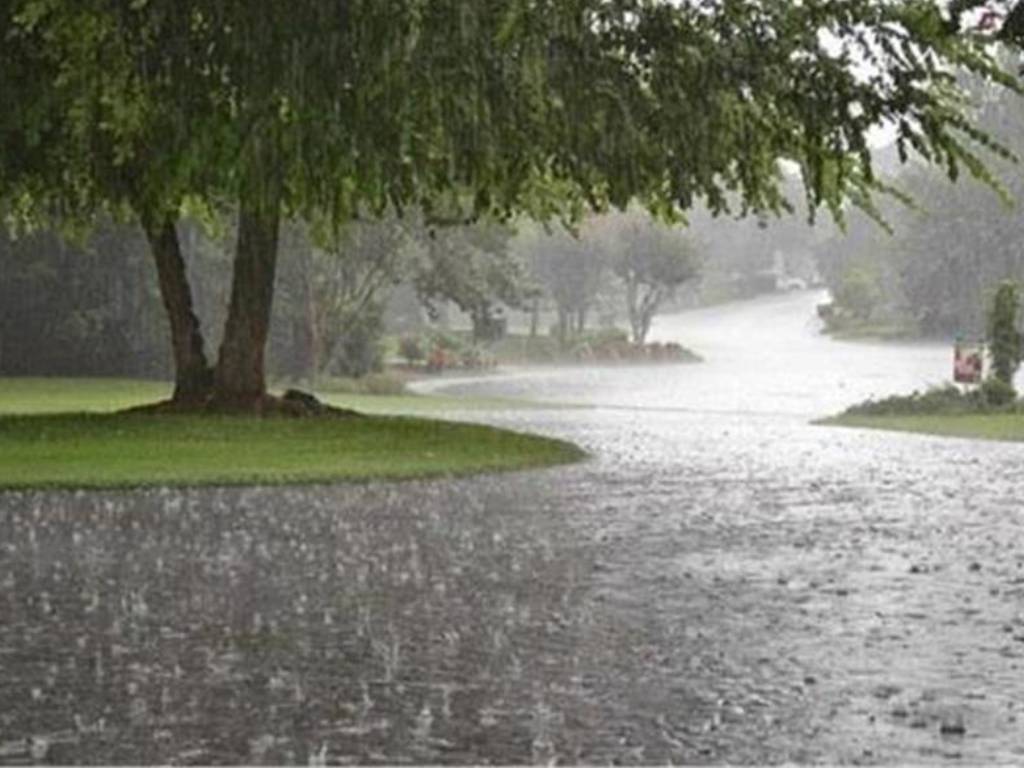Chandigarh Weather – A Pleasant Climate All Year Round
Understanding Chandigarh Weather – Seasons, Climate, and Best Time to Visit
Chandigarh enjoys a subtropical continental climate, characterized by distinct seasonal variations that offer a refreshing change throughout the year. The city’s location at the base of the Shivalik Hills influences its moderate weather, ensuring pleasant winters and tolerable summers compared to the neighboring plains. With abundant greenery, tree-lined avenues, and open spaces, Chandigarh’s environment remains cleaner and cooler than many urban areas in North India. Its well-planned architecture also allows for better airflow and reduced heat retention, contributing to its reputation as one of India’s most livable cities.
The summer season in Chandigarh typically spans from April to June, with temperatures ranging from 25°C to 40°C. The heat is manageable due to the city’s ample green cover and proximity to the hills. As monsoon arrives in July, the city transforms into a vibrant landscape of blooming gardens and rain-washed roads. Average rainfall ranges between 700mm and 1200mm, bringing relief from the summer heat while enhancing Chandigarh’s natural beauty. Despite occasional humidity, the rainy season is ideal for nature lovers and photographers who wish to capture the city’s lush surroundings.
Following the monsoon, autumn (October to November) offers crisp air, bright sunshine, and moderate temperatures ranging from 18°C to 30°C. This is the most comfortable period for sightseeing and exploring outdoor attractions like Sukhna Lake, Rock Garden, and Leisure Valley. The winter season (December to February) brings cool breezes and foggy mornings, with temperatures dropping as low as 5°C. Yet, the chill adds charm to Chandigarh’s tranquil mornings and scenic landscapes. Tourists often enjoy hot beverages and cozy stays while experiencing the city’s festive winter vibe.
The ideal time to visit Chandigarh is between October and March, when the weather is cool, clear, and perfect for exploring. During these months, outdoor activities, garden festivals, and heritage walks are at their best. Springtime, in particular, brings colorful blossoms across parks and boulevards, reflecting Chandigarh’s title as the “City Beautiful.” Whether you are planning a leisure trip, a photography tour, or simply want to enjoy the calm surroundings, Chandigarh’s climate ensures a refreshing and rejuvenating experience all year round.
information
Chandigarh Weather

Autumn
Summer season


Monsoon Season
Winter season


Spring Season
Chandigarh Weather and Climate Overview
Seasonal Highlights
- **Pleasant Winter Mornings**: Crisp air and misty mornings make winter perfect for exploring Rock Garden, Sukhna Lake, and Chandigarh’s lush parks without heat or humidity.
- **Spring Bloom Beauty**: Between February and March, gardens like Zakir Hussain Rose Garden burst with color as vibrant flowers and green landscapes attract nature enthusiasts.
- **Refreshing Monsoon Showers**: Gentle rains transform Chandigarh into a scenic paradise, reviving its lakes, gardens, and tree-lined roads with a refreshing fragrance.
- **Warm Summer Evenings**: Despite hot days, summer sunsets offer cooler breezes — ideal for lakeside walks, night markets, and rooftop dining experiences.
- **Autumn Serenity**: October brings clear skies and soft golden light, making it one of the best times for outdoor photography and sightseeing.
- **Year-Round Comfort**: Thanks to its balanced climate, Chandigarh remains an inviting destination throughout the year, offering different seasonal charms for every traveler.
Chandigarh Climate Insights
- **Temperature Range**: Chandigarh experiences moderate temperatures year-round, varying from around 5°C in winter to 40°C in summer, offering a true North Indian seasonal mix.
- **Humidity Levels**: The city enjoys low to medium humidity most of the year, ensuring comfort even during monsoons when greenery flourishes across parks and boulevards.
- **Rainfall Patterns**: With an average annual rainfall of about 1,100 mm, the monsoon months of July and August bring refreshing showers and cooler surroundings.
- **Sunshine Hours**: Chandigarh receives ample sunlight for nearly eight months, making it ideal for outdoor activities, sports, and sightseeing adventures.
- **Wind Conditions**: Gentle breezes flow from the Shivalik foothills, especially in the evenings, giving the city its clean, breathable air and calm environment.
- **Air Quality Advantage**: Thanks to abundant green belts and tree-lined sectors, Chandigarh maintains one of the best air quality levels among major Indian cities.
Chandigarh Weather Overview
| Season | Months | Weather Description |
|---|---|---|
| Winter | November – February | Cool and pleasant weather, ideal for outdoor sightseeing, with temperatures ranging from 5°C to 20°C. |
| Summer | March – June | Warm to hot temperatures between 25°C and 40°C, suitable for evening outings and lakeside walks. |
| Monsoon | July – September | Frequent rainfall brings greenery and freshness; best for nature lovers and photography enthusiasts. |
| Autumn | October | Moderate climate with clear skies and gentle breezes, perfect for exploring gardens and outdoor attractions. |






